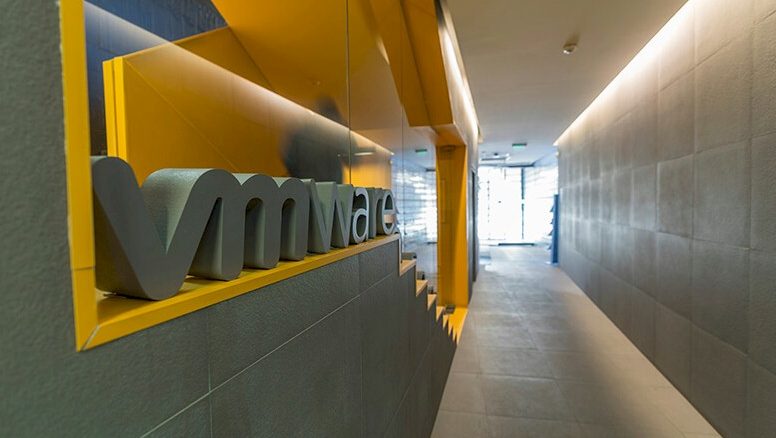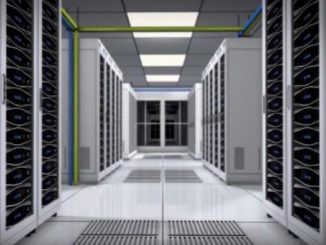
Hyperconverged infrastructure came out of fairly humble beginnings almost a decade ago. And while it has not taken over the datacenters of the world as many predicted, these virtualized server-storage hybrid platforms now sport virtual networking and management software integrated into a single appliance and they have found their place.
HCI initially caught hold in a few niche markets, in particular virtual desktop infrastructure (VDI) for enterprises with somewhat distributed workforces (a demand that has only accelerated during the COVID-19 pandemic).
However, since that time, the market for HCI has expanded, in several dimensions, including in spending. IDC analysts in March said hyperconverged infrastructure continues to be the largest and fastest growing segment in the larger converged systems space. In the fourth quarter 2020, HCI revenue worldwide grew 7.4 percent year-over-year, to $2.5 billion, accounting for 54.2 percent of the entire converged systems market.
It’s also become a highly competitive space, crowded with traditional hardware OEMs and software makers like Dell Technologies, Hewlett Packard Enterprise, Cisco Systems and Nutanix. VMware also is a major player in the market, both through its collaboration with Dell on the Dell-branded VxRail HCI as well as its own software-based offering that includes its vSAN virtualized storage offering, vSphere hypervisor, NSX virtual networking platform and vRealize Suite for datacenter and cloud management. VMware is at the top of IDC’s list of HCI software vendors, with 38.7 percent market share, well ahead of Nutanix.
What VMware and others are now seeing is another evolution of HCI – in the kinds of applications that are bring run in the highly integrated environments. In a survey released this month – the results are presented in an ebook – the virtualization and cloud software maker found that organizations increasingly are trusting hyperconverged infrastructures to run some of their most critical applications.
In a 2017 survey of more than 300 organizations, the company found that the top three type sof applications deployed on HCI were relational databases (67 percent of respondents), Microsoft applications (26 percent) and VDI (21 percent). This year, VMware surveyed more than 600 users in North and South America as well as Europe, and found that enterprises are rapidly shifting their big data analytics, artificial intelligence (AI) and machine learning, and container orchestration workloads to HCI (below).
The company also found that 86 percent of those surveyed said they planned to make HCI the standard for most of their future deployments. All this was good to see but not necessarily surprising, according to Lee Caswell, vice president of marketing for VMware’s Cloud Platform Business Unit. VMware, like other HCI providers, has been adding capabilities to its HCI offerings to drive the performance and capacity needed to keep up with modern workloads and the ongoing enterprise shift to hybrid cloud environments.
vSAN comes with all-flash support – including NVMe – and other storage technologies, with the largest cluster sizes running more than 9 million IOPS. The vSAN 7 Update 1 software upgrade, launched in September, improve performance by up to 30 percent through such enhancement as CPU optimizations, network improvements and improved parallelization. It can scale from two to 64 nodes per cluster and can scale through added nodes to a host or drives to existing nodes. In addition, in September VMware launched HCI Mesh, which disaggregates compute and storage and enables it to scale across clusters or by letting vSAN clusters share capacity with non-HCI clusters.
VMware also has built Kubernetes directly into the hypervisor to enable its HCI offerings to better support containers and its vSAN Data Persistence platform is aimed at modern stateful applications running on VMware Cloud Foundation with Tanzu, the company’s Kubernetes package that was the result of VMware’s $2.7 billion acquisition of Pivotal in 2019 and enables organizations to run and manage both virtual machines and containers.
“At VMware. we took traditional apps – and by those I mean like databases and Microsoft apps – and virtualized those,” Caswell tells The Next Platform. “But increasingly apps are being developed using containers. A lot of folks early on thought containers were going to be the end of VMware, because they sounded similar at some level. Containers were virtualizing some of the OS properties. But here’s what we found to be true: Containers are about the speed of development and so container development environments … allow you to basically build applications, put them through test and dev much more quickly. At the same time, you want to deploy those applications on enterprise-proven, resilient infrastructure. That’s what VMware has. What we hoped to be true turned out to be true, namely that containers would be deployed in virtual machines.”
HCI also has become a key enabler of hybrid clouds. According to VMware’s survey, more than half of respondents listed the ability to extend vSAN between on-premises sites and the public cloud as a significant benefit. The aim is to offer enterprises a single operating and management environment that can run in datacenters and public clouds. VMware has been aggressive in extending the reach of its offerings beyond the datacenter and into the cloud through both innovation and partnerships with such top cloud providers as Amazon Web Services, Microsoft Azure, and Google Cloud.
“You’re going to have this distributed cloud environment,” Caswell says. “Then the question becomes, how do I manage these multicloud endpoints? I’ve got my private cloud over here and I’ve got something on Google over here and so on. What VMware is offering is the same stack that’s running on-prem and in every one of the public points of presence. Now our hybrid cloud model … abstracts the clouds for users and it means you have exactly the same consistent operating model. We can always vMotion right across servers, but now with this, you’ve got the same storage unit, the same server, you have the same security model all the way across the hybrid cloud. If you look at the results, the hybrid cloud is actually the number-one reason why people are moving to HCI. They want that system operating model and investment protection because no one knows where they’re going to be in three years. They’re all making it up. Now you’ve got this really interesting, consistent model across the hybrid cloud.”
HCI will continue to evolve, particularly in three directions, he says. The first is in the workloads. Hyperconverged infrastructure has address various databases and containers. The next one up is AI, Caswell says. For VMware, that means working with GPU maker Nvidia. In September at the virtual VMworld 2021 event, Nvidia founder and CEO Jensen Huang and then-VMware CEO Pat Gelsinger – now the chief executive at Intel – talked about an expanded partnership that includes VMware integrating Nvidia’s NGC suite of AI-optimized software into its cloud offerings and with VMware’s “Project Monterey” to build a hardware architecture for VMware Cloud Foundation hybrid cloud platform to run modern apps more efficiently.
The push is to ensure that enterprises will be able to run AI workloads on HCI rather than bare metal without a drop-off in performance.
“What that means is if you’re an airline, you would be able to do automated lost luggage searches more quickly,” he says. “If you’re in retail, you’d be able to do automated checkout with fraud detection built in. You’d be able to do live monitoring of a retail environment or traffic flows to help with product placements. These are interesting new use cases. The idea is that most of these AI and ML deployments are done by data scientists and the average deployment is over 40 weeks to get them in place. VMware basically makes sure that in the enterprise, the idea that AI might be applied to every business right now in HCI becomes that way to go and deploy it really seamlessly. That new workload is going to be really critical.”
Similarly, VMware will leverage data processing units (DPUs) for addressing data-intensive workloads. A key to DPUs is that they work independently of the CPU, rather than being subservient to it, Caswell says. This enables the DPU to offload non-compute tasks from the CPU and then enabling the HCI to run them. In addition, the DPU can be used to run core-intensive security jobs like distributed firewalls and secure boot and VMware can have its software running on the chip.
“It opens up a big market for us to basically have a management model for managing their metal applications where you might want to run them on bare metal for either performance or licensing other purposes,” he says.









Be the first to comment